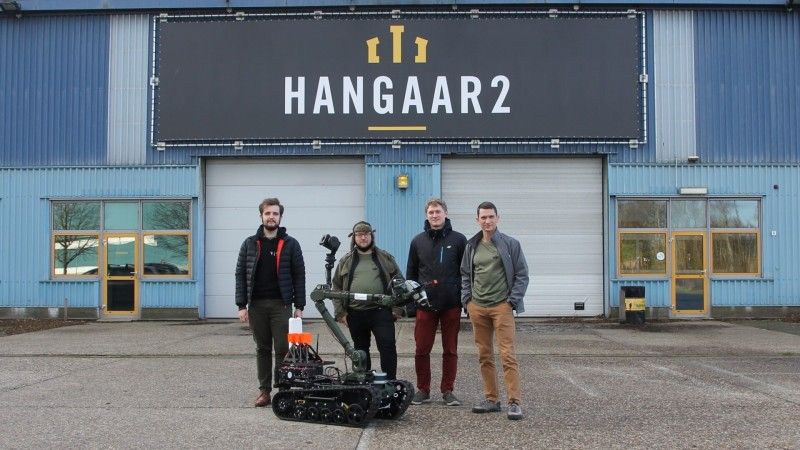Industry
Łukasiewicz - PIAP Among the Finalists of Competition Run by ESA

Photo. Łukasiewicz-PIAP
Engineers of the Łukasiewicz - PIAP institute are among the finalists in a competition organized by ESA and ESRIC. The assumption is to develop and test a robot for Lunar „resources reconnaissance” purposes, to facilitate future exploitation of extraterrestrial resources.
Back in July 2021, the engineers of the Łukasiewicz Research Network - Industrial Research Institute for Automation and Measurements have submitted their request to participate in the Space Resources Challenge competition. They have passed the first stage, joining 13 other entities from Europe and Canada. Then, in 2021, they went to the Netherlands to test their robot on a test track prepared by ESA, replicating the moon conditions. They were to cover a track in a limited time and gather geological data when underway. The team completed this task and went into the final stage, along with 5 other teams. Now they would be working on perfecting their solution, with financing provided by ESA and ESRIC.
Participation in a competition organized by ESA is an incredible experience. We can observe how the robots handle tasks related to the exploration of an adverse environment. This field of application for robots would be the foundation of the future exploration of the Solar System. The European entities may play an important role here. Taking part in an undertaking as such is a dream come true for any engineer.
@ Piotr Szynkarczyk PhD Hab. Eng, Director at Łukasiewicz-PIAP
The remaining contenders that would be competing against the Polish team include major research facilities, specializing in space programmes:
- ETH Zurich & University of Zurich (Switzerland),
- Mission Control Space Services (Canada),
- FZI Forschungszentrum Informatik (Germany),
- Space Application Services & Universite Du Luxembourg & Dynamic Imaging Analytics & La Palma Research Centre & University de Lorraine & The Open University (Belgium / Luxembourg / the UK / France).

ESA-ESRIC "Space Resources Challenge" competition
It is the first competition as such organized by ESA. The objective is to develop and test a robot for resources reconnaissance on the moon, to facilitate future exploitation of extraterrestrial resources. Tests organized within the current stage were taking place between 22nd and 27th November, in Noordwijk, the Netherlands.
"We did not know what terrain our robot would face, and what could turn out to be troublesome. Thus, as we have reached the key fragment and saw the tracks left by us on the surface that we have been checking out, we have felt like true explorers. Now, we would like to increase our score, definitely" - as Jakub Główka, head of the division getting ready for the competition said.
Five winners of that stage would be awarded financing to perfect their solution and go through a similar test next year, in September 2022. There, one winner would be selected. That winner would be given a chance to develop the technologies further and become a part of the ESA's Moon exploration supply chain. The finalist is to deliver readymade elements expected to land around the Lunar south pole in 2029 - as a part of the European Large Logistic Lander mission. It is one of a few of the planned Moon missions, alongside the famous Artemis undertaking, dedicated to building a Moon transit/research station in the South Lunar Pole.
The Polish Team
4 persons were directly involved in the testing, according to the limits defined by the organizers:
Jakub Główka (Łukasiewicz – PIAP), Filip Jędrzejczyk (Łukasiewicz – PIAP), Michał Bryła (Łukasiewicz – PIAP) Łukasz Kruszewski (Geological Sciences Institute, Polish Academy of Sciences).
It needs to be emphasized that a broad team of experts from numerous divisions at the Łukasiewicz - PIAP institute had been involved in the undertaking.

The robot sent to the competition weighs 100 kilograms, and it has been designed for visual reconnaissance of the given area. For that purpose, a dedicated version of the PIAP Patrol robot has been developed. The robot features several specialist cameras and tracked/wheeled drive system, enhancing the robot's offroad mobility.

The work that was aimed at preparation of the rover for the ESA competitio was carried out at Łukasiewicz - PIAP, using its own budget. The key to the success stemmed from the use of experience and solutions developed and acquired during the past European research projects in the field of robotics.
Source: Łukasiewicz-PIAP
